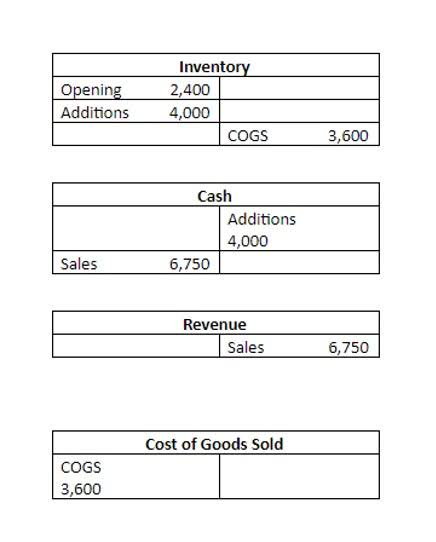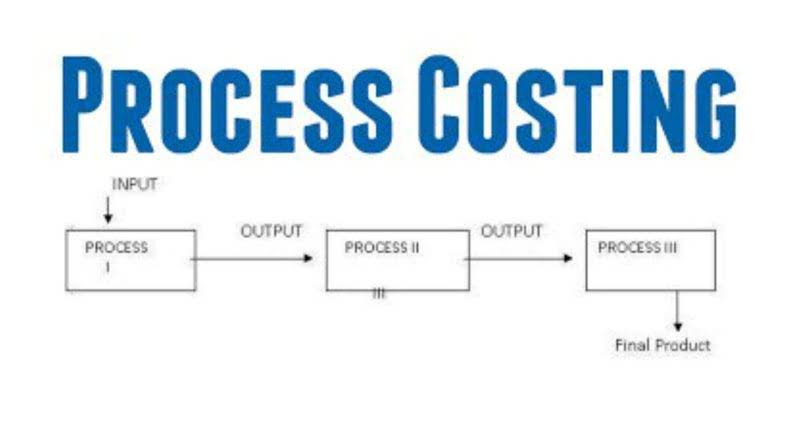
He has been the CFO or controller of both small and medium sized companies and has run small businesses of his own. He has been a manager and an auditor with Deloitte, a big 4 accountancy firm, and holds a degree from Loughborough University. A maturing company may not have many options or high-return projects for which to use the surplus cash, and it may prefer handing out dividends. The accounting term that means an entry will be made on the left side of an account.
Are retained earnings debit or credit?
- Year-end closing entries are critical in accounting because they ensure that all temporary accounts (revenues, expenses, profits, and losses) are closed to retained earnings or owner’s equity accounts.
- Over the same duration, its stock price rose by $84 ($227 – $143) per share.
- The total equity is equal to the amount left over after subtracting total liabilities from total assets.
- Since retained earnings is a component of the equity section, any increase in retained earnings is recorded as a credit, aligning with the rules for all equity accounts.
- Negative retained earnings, known as an accumulated deficit, indicate that a company has incurred more losses than profits over time.
Furthermore, dividends declared and paid to shareholders also decrease retained earnings. The trial balance serves as a foundational report in the accounting process, providing a snapshot of all account balances at a given point in time, including retained earnings. This report ensures that debits and credits are accurately recorded and balanced, which is a preliminary step before compiling more detailed financial statements. Retained earnings appear on the trial balance as part of equity and represent the link between the income statement and the balance sheet.
Understanding the Accounting Equation
The Income Summary account then reflects the period’s net income (a credit balance) or net loss (a debit balance). A subsequent entry transfers this balance from Income Summary to Retained Earnings. For business accounting purposes, retained earnings are considered a credit balance account. The amount is credited with additional profits and is debited as a result of losses or dividend distributions. This reduction in retained earnings through dividends is an aspect of how companies manage their capital structure and shareholder returns. The decision to pay dividends involves balancing the desire to reward shareholders with the need to retain funds for future growth, debt repayment, or other operational requirements.
Understanding Retained Earnings in Financial Health
- You can find the amount on the balance sheet under shareholders’ equity for the previous accounting period.
- The reconciliation process is essential for transparency and for identifying any discrepancies that may arise from accounting errors or omissions.
- When a company consistently experiences net losses, those losses deplete its retained earnings.
- At the end of each accounting period, net income (or loss) is transferred from the income statement to the retained earnings account through a closing entry.
- Specifically, an increase in retained earnings is recorded as a credit, while a decrease is recorded as a debit.
These earnings accumulate over the life of the business, reflecting its historical profitability after all distributions. Negative retained earnings are common in startups, especially during their early years. Startups often incur losses as they invest heavily in product development, marketing, and infrastructure before generating consistent revenue. These early-stage deficits typically lead to negative retained earnings until the business becomes profitable over time.
- Therefore, net income is recorded as a credit to the retained earnings account, increasing its balance.
- The company decided to retain the profits for that year and invest the retained earnings in expanding the business.
- You can use your profit and loss statement or cash flow statement if you need help determining your net income or net loss from the current period.
- The expense accounts have debit balances so to get rid of their balances we will do the opposite or credit the accounts.
- This statement provides a bridge between the income statement and the balance sheet, showing how the profits attributable to shareholders have been utilized.
- They increase with a credit entry, and retained earnings decrease with a debit entry.
For instance, a $50,000 net loss results in a $50,000 debit to retained earnings. Liabilities are obligations owed to external parties, including accounts payable or loans. Unlike assets, an increase in a liability is a credit, does retained earnings have a credit balance and a decrease is a debit.

What is the Normal Balance in the Retained Earnings Account?
They are generally available for distribution as dividends or reinvestment in the business. Then, explore different strategies for utilizing these funds wisely, such as investing in research and development or acquiring new assets. By making informed decisions about your retained earnings, you’ll pave the way for long-term success and prosperity in your small business journey. High retained earnings indicate the company is more profitable and financially secure. This can inspire confidence among stakeholders such as investors, lenders, and potential partners. Welcome to AccountingJournalEntries.com, your ultimate resource for mastering journal entries in accounting.

End Balances in Retained Earnings

If the company then pays $5,000 in dividends, retained earnings would be debited, reducing the balance to $115,000. Building on the understanding of equity accounts, retained earnings primarily accumulate through a company’s profitability. When a business generates net income (revenue minus expenses), this profit increases the real estate cash flow owners’ claim on the company’s assets.
What Is a P&L Statement? A Financial Overview
- By increasing shareholder equity, retained earnings can improve a company’s debt-to-equity ratio, often scrutinized by investors and creditors to assess financial leverage and risk.
- Samsung Inc. earned a net profit of 500,000 during the accounting period Jan-Dec 20×1.
- Retained earnings are therefore an accounting entry which acts as a reserve for unallocated earnings, pending arbitration.
- A net loss occurs when expenses exceed revenues, effectively reducing the accumulated profits available within the business.
- Building on the understanding of equity accounts, retained earnings primarily accumulate through a company’s profitability.
- Find out how it sheds light on your company’s financial management, with a case study to illustrate.
Debits are usually placed on the left side of the accounting entry while credits are placed on the right-hand side. The total amount realized by a company from the sales of goods or services rendered is its revenue. This amount includes all income that has been generated before the deduction of expenses and it is commonly referred to as gross sale. When the company is able to generate considerable revenue, it will be able to comfortably settle its expenses and other obligations while still having a considerable amount left over as retained earnings. The useful lifespan of an asset is the time it will take from its purchase to when it will no longer be efficient.
Alternatively, if it is to correct the understatement of prior period net income, the company will credit the retained earnings in the journal entry instead. Income summary is a temporary account that is used at the end of the period to close all income and expenses in the income statement. In other words, all income goes to the credit of income summary while all expenses go to the debit of income summary resulting of the net amount in the income summary account as net income or net loss. If a company decides not to pay dividends, and instead keeps all of its profits for internal use, then the retained earnings balance increases by the full amount of net income, also called net profit. It reconciles the beginning balance of net income or loss for the period, subtracts dividends paid to shareholders and provides the ending balance of retained earnings. When a business generates profits that are kept within the company, these earnings contribute to the balance of the retained earnings account.
Creating a Comprehensive Restaurant Chart of Accounts
For example, if a business earns a net income of $50,000 for the year, this $50,000 would be credited to retained earnings, thereby increasing the total accumulated profits. Retained earnings represent https://crystaltechservices.fr/how-to-calculate-accrued-payroll-and-record-it/ the accumulated profits a business has generated over its lifetime that have not been distributed to its shareholders. This account is a significant component of a company’s equity, reflecting the portion of earnings reinvested back into the business or held for future use. It showcases a company’s financial strength and its capacity to fund future operations, expand, or pay down debt without relying solely on external financing. The balance in this account provides insight into a company’s historical profitability and its ongoing financial management decisions. Conversely, a net loss incurred by the company will decrease retained earnings.
